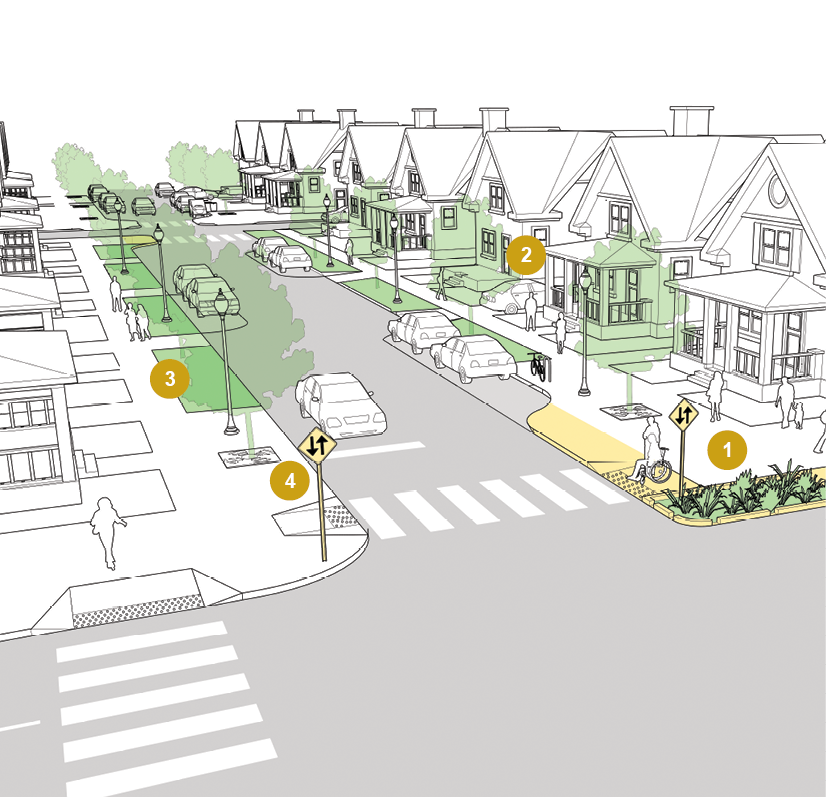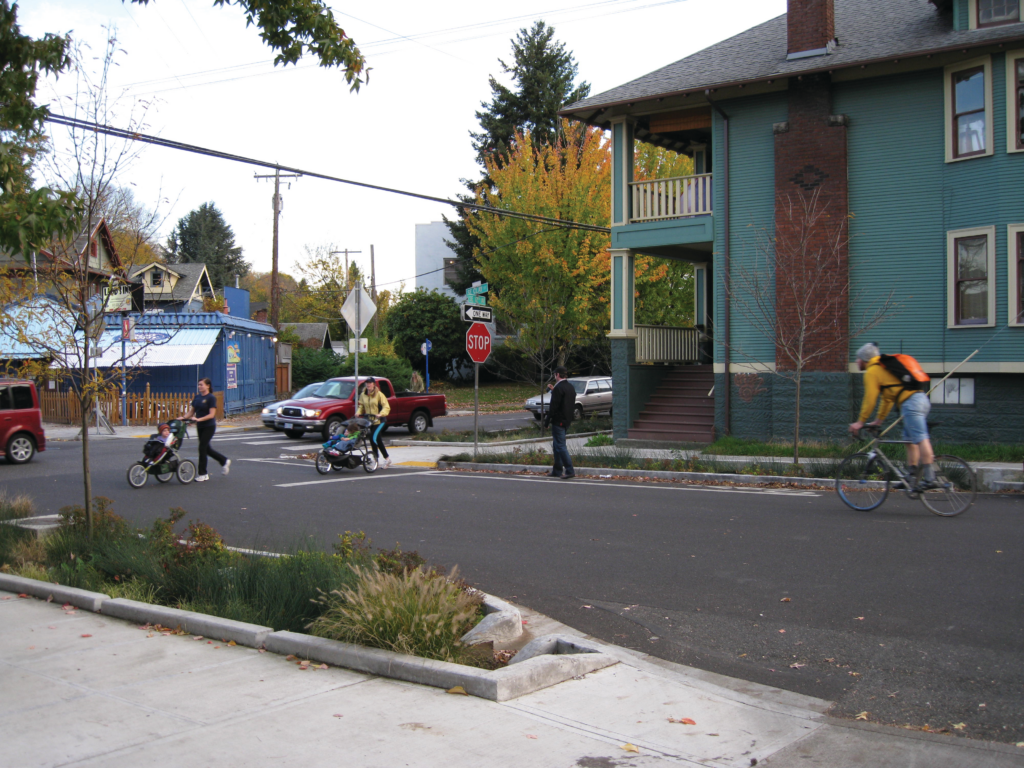2-way yield streets are appropriate in residential environments where drivers are expected to travel at low speeds. Many yield streets have significant off-street parking provisions and on-street parking utilization of 40–60% or less. Create a “checkered” parking scheme to improve the functionality of a yield street.
Recommendations

For a yield street to function effectively, motorists should be able to use the street intuitively without risk of head-on collision. Depending on whether the yield street has high or low parking utilization, flush curbs, or other features, its configuration may vary. A yield street with parking on both sides functions most effectively at 24–28 feet, while yield streets with parking on only one side can be as narrow as 16 feet.1
1All residential streets should provide safe and inviting places to walk and good access to local stores and schools. Design should mitigate the effects of driveway conflicts, reduce cut-through traffic, and maintain slow speeds conducive to traffic safety.
2Driveways should be constructed to minimize intrusion upon the sidewalk. Maintain sidewalk materials and grade across driveways.
3The planted furniture zone of the sidewalk creates opportunities for street trees, bioswales, pervious strips, and rain gardens.
4While most yield streets should have a minimum of signage and striping, signage should be used to indicate bidirectional traffic at transition points or where 2-way operation has recently been introduced.
Parking utilization on yield streets should be monitored closely. Before and after conversion, cities should consult with local residents to see whether or not a “checkered” parking scheme should be striped or remain unofficial.

A curb extension narrows the entry and slows turning vehicles at the mouth of this yield street.
- For additional research on yield streets and skinny streets, see:
James M. Daisa and John B. Peers, “Narrow Residential Streets: Do They Really Slow Down Speeds,” (Washington, D.C.: Institute for Transportation Engineers, 1987). ↩︎